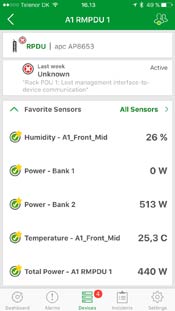For all the chatter these days surrounding the potential of the Internet of Things (IoT), one of the most fundamental use cases for these technologies is going to be inside rather than outside of the data center. A case is point is Schneider Electric’s new StruxureOn cloud service that makes use of sensors and application programming interfaces (APIs) to pull machine data from physical equipment manufactured by Schneider Electric and puts it into a cloud analytics application.
Steve Carlini, senior director of data center global solutions for Schneider Electric, says pulling data from Schneider racks and power supplies is only the first step. In time Schneider will make use of APIs from server and storage vendors to collect data about events occurring across the entire data center. The result will be a large instance of a Big Data analytics application designed specifically for IT organizations, says Carlini.
Carlini says it’s now a lot more economically feasible to securely collect all this data from within the data center thanks to the cloud. As a result, Carlini says, management of data centers as a whole is likely to become a lot more proactive.
In general, most IT organizations today are in reactive mode, waiting for some unexpected event to occur that they hope they can respond to fast enough to prevent any disruption in IT service. In the future, the management of IT will become much more automated as advanced analytics applications become more proficient at identifying a particular issue before it can ever impact the IT environment.
From a cultural perspective, there’s no doubt this change will have a profound impact on everything from the number of people required to staff an IT organization to the types of skills those people are expected to possess. That means the next big challenge isn’t necessarily the analytics applications required to enable those changes, but rather the dramatic impact those inevitable changes will have on IT culture within the IT organization.




